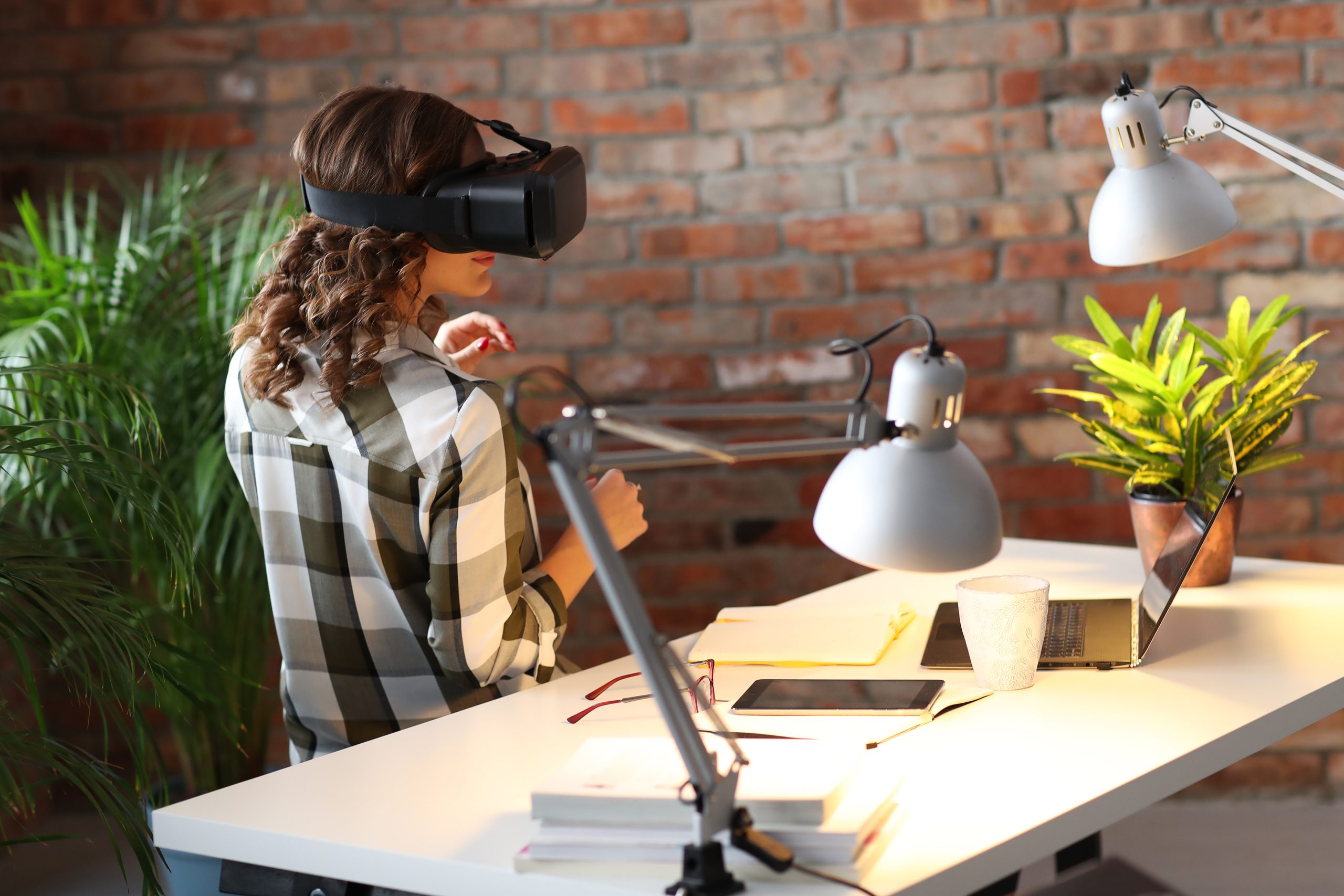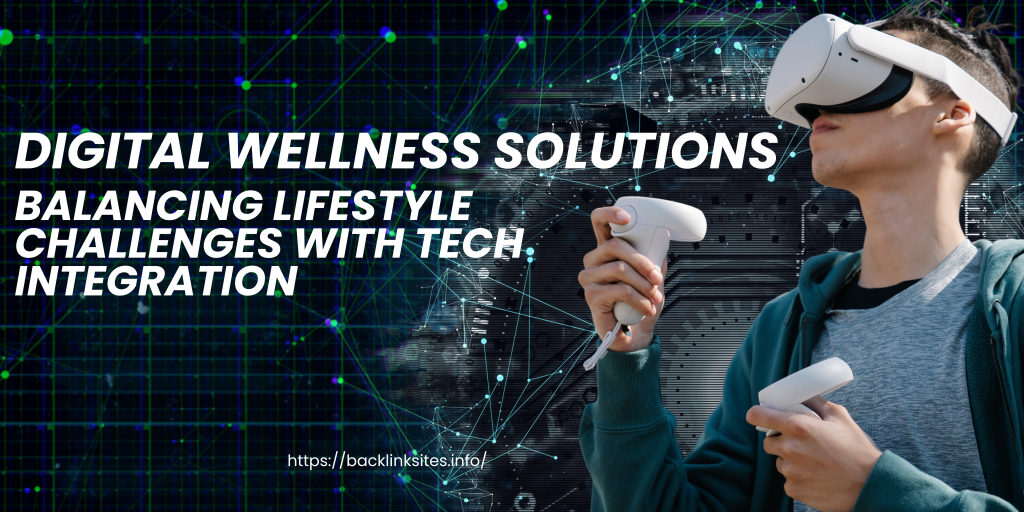Digital Wellness Solutions: Balancing Lifestyle Challenges with Tech Integration

Introduction
Technology is an integral part of our daily lives in today’s fast-paced world. It has a significant influence on how we handle our work, health, and relationships. From computers and smartphones to wearables and smart home devices, technology surrounds us everywhere. Undoubtedly, technology has brought numerous improvements to our lives. However, it also comes with its own set of challenges that can affect our overall well-being. To tackle these problems, digital wellness solutions have emerged as a way to promote a healthy lifestyle by advocating for responsible technology usage and fostering positive habits.
Understanding Digital Wellness
In today’s digital age, it’s crucial to prioritize digital wellness, which involves fostering a healthy relationship with technology. This means developing habits and strategies that allow us to use technology in a way that improves our well-being instead of harming it. Important elements of digital wellness include: Managing how much time we spend looking at screens Reducing the number of things that can distract us online Making sure that technology supports our mental and physical health rather than
Importance of Digital Wellness
The importance of digital wellness cannot be overstated. As we rely more and more on technology, the potential for negative effects on our mental and physical health increases. Poor digital habits can lead to sleep issues, anxiety, depression, and lower productivity. Digital wellness promotes a healthier and more balanced approach to using technology, which helps mitigate these
Common Lifestyle Challenges
Modern lifestyles are fraught with challenges that can impact our well-being. Common issues include:
Work-life balance: The blurring of boundaries between work and personal life due to remote work and constant connectivity.
Mental health: Increased screen time and social media use contributing to anxiety, depression, and stress.
Physical health: Sedentary behavior associated with prolonged tech use leading to obesity, back pain, and other health problems.
Sleep issues: Exposure to blue light from screens disrupting sleep patterns and quality.
Impact of Technology on Lifestyle
Technology has a profound impact on almost every facet of our lives. While it brings convenience and efficiency, it can also present substantial challenges to our lifestyle. Recognizing these effects is essential in order to devise successful strategies for promoting digital well-being.
Positive Effects of Tech Integration
When used mindfully, technology can have numerous positive effects on our lifestyle:
Improved productivity: Tools and apps that enhance time management and organization.
Better health monitoring: Wearable devices that track physical activity, heart rate, and sleep.
Enhanced learning: Access to online courses and educational resources.
Increased connectivity: Keeping in touch with friends and family through social media and communication apps.
Negative Effects of Tech Integration
Despite its benefits, technology can also negatively impact our lives:
Digital addiction: Excessive use of social media, gaming, or internet browsing.
Mental health issues: Anxiety and depression linked to constant connectivity and social comparison.
Reduced physical activity: Sedentary behavior due to prolonged screen time.
Privacy concerns: Risks associated with data breaches and digital footprints.
Balancing Technology and Wellness
Accomplishing a harmony between innovation use and generally speaking health includes careful pursues and deliberate routines. It requires defining limits, for example, restricting screen time and making without tech zones at home. Exercise, hobbies, and face-to-face interactions are all important ways to improve one’s physical and mental health.
Digital Detox Strategies
A digital detox involves taking a break from technology to reduce stress and improve well-being. Strategies for a successful digital detox include:
- Scheduled breaks: Allocating specific times of the day to disconnect from digital devices.
- Alternative activities: Engaging in physical activities, reading, or spending time outdoors.
- Mindfulness practices: Incorporating meditation and deep-breathing exercises to manage stress.

Creating Healthy Tech Habits
Developing healthy tech habits is essential for maintaining digital wellness. Some effective practices include:
- Setting boundaries: Limiting the use of technology during meals, bedtime, and social interactions.
- Using technology intentionally: Being mindful of the purpose and duration of tech use.
- Regular breaks: Following the 20-20-20 rule (every 20 minutes, take a 20-second break and look at something 20 feet away).
Mindful Tech Use
Making deliberate decisions to use technology in ways that improve our lives and being attentive of how it impacts our wellbeing are key components of mindful tech use. This can involve utilizing apps that encourage mindfulness and relaxation, curating social media feeds, and shutting off notifications.
Tech Tools for Wellness
It is possible to use technology itself to encourage wellbeing. To promote both physical and mental health, a plethora of tools and applications are available.
Apps for Mental Health
Mental health apps offer help with meditation, counseling, and keeping track of your feelings. Some of the most well-liked choices are:
- Headspace: Meditation and mindfulness exercises.
- Calm: Sleep stories, relaxation music, and guided meditations.
- Better Help: Access to licensed therapists for online counseling.
Wearable Devices for Physical Health
Wearable gadgets like wellness trackers and smartwatches can screen different parts of actual wellbeing, including:
- Step count: Encouraging daily physical activity.
- Heart rate: Monitoring cardiovascular health.
- Sleep patterns: Tracking and improving sleep quality.
Smart Home Devices for a Better Lifestyle
Smart home devices play a key role in promoting a healthier lifestyle through the automation of daily routines and enhancement of living spaces. Some examples of these devices include:
- Smart thermostats: Regulating home temperature for better sleep.
- Voice assistants: Managing schedules and reminders for healthy habits.
- Air purifiers: Improving indoor air quality.
Digital Wellness Programs
Programs for digital health provide organized methods for enhancing tech-related behaviors. These initiatives can be used in a variety of contexts, including businesses and educational institutions.
Corporate Wellness Solutions
Lots of companies are realizing how important it is for their employees to have good digital wellness. That’s why they’re starting to offer programs to help them out. These programs can include:
- Workshops and seminars: Educating employees about healthy tech use.
- Wellness apps: Providing access to tools that promote mental and physical health.
- Flexible work policies: Allowing remote work and flexible hours to reduce stress.
Education and Digital Wellness
Schools are likewise incorporating computerized wellbeing into their educational programs to assist understudies with creating solid tech propensities. This could include:
- Digital literacy courses: Teaching students about the impacts of technology on well-being.
- Mindfulness practices: Incorporating meditation and stress management techniques into the school day.
- Parental involvement: Educating parents on how to support their children’s digital wellness.
Family and Digital Wellness
Encouraging a healthy digital lifestyle within the family can result in happier and healthier households. Here are some suggestions for creating a more balanced tech environment:
- Setting screen time limits: Establishing rules for device use during meals and before bedtime.
- Encouraging offline activities: Promoting hobbies and outdoor play.
- Modeling healthy behavior: Parents leading by example with mindful tech use.
Social Media and Wellness
Social media use can impact wellbeing in both favorable and unfavorable ways. To make wise use of social media, think about:
- Curating feeds: Following accounts that inspire and uplift.
- Setting boundaries: Limiting time spent on social platforms.
- Engaging mindfully: Avoiding comparison and focusing on meaningful interactions.
Online Communities for Support
Online groups are great for people who want to get better at using technology. You can find support and tips in groups that talk about health, staying calm, or things you’re interested in.
Telehealth and Remote Care
Telehealth administrations have become progressively famous, offering advantageous admittance to medical care experts. Advantages of telehealth include:
- Accessibility: Receiving care from the comfort of home.
- Flexibility: Scheduling appointments that fit personal schedules.
- Comprehensive care: Access to a wide range of medical services, from mental health counseling to chronic disease management.
The Future of Digital Wellness
The realm of digital wellness is constantly progressing, with fresh technologies and approaches surfacing to promote well-being. Anticipated future developments may encompass:
- Advanced AI tools: Personalizing wellness recommendations based on individual data.
- Virtual reality: Using VR for immersive meditation and stress relief experiences.
- Integrated health platforms: Combining multiple wellness tools into seamless, user-friendly applications.

Challenges in Digital Wellness
Despite the benefits, there are several challenges in promoting digital wellness:
- Awareness: Many people are not aware of the impact of technology on their well-being.
- Accessibility: Access to digital wellness tools and programs may be limited for some populations.
- Sustainability: Maintaining healthy tech habits over the long term can be difficult.
Ethical Considerations
Making sure that when we use technology, we are not taking advantage of or hurting anyone. This is important to keep in mind for digital wellness:
- Data Privacy: Protecting user information and maintaining confidentiality.
- Transparency: Being clear about how personal data is used.
- Equity: Ensuring that wellness solutions are accessible to all, regardless of socioeconomic status.
Privacy and Security in Digital Wellness
As we progressively depend on computerized health apparatuses, protection and security become fundamental. Key contemplations include:
- Data encryption: Ensuring that personal data is securely stored and transmitted.
- User consent: Obtaining explicit permission before collecting and using data.
- Regular updates: Keeping software and devices up-to-date to protect against security breaches.
Success Stories
Many people and groups have found success by using digital wellness tools. For instance:
- Corporate wellness programs: Companies reporting improved employee productivity and satisfaction.
- Schools: Students benefiting from reduced stress and better focus through digital wellness curriculums.
- Individuals: Personal accounts of improved mental and physical health through mindful tech use.
Tips for Maintaining Digital Wellness
To maintain digital wellness, consider the following tips:
- Regular breaks: Take frequent breaks from screens to rest your eyes and mind.
- Balanced activities: Mix online and offline activities to promote overall well-being.
- Mindful consumption: Be selective about the digital content you consume, focusing on positive and enriching experiences.
FAQs
- How can I start a digital detox?
Initiate a digital detox by establishing clear objectives, such as minimizing screen time, and substituting technology usage with in-person activities. Progressively extend the length of time spent without technology and integrate mindfulness exercises.
- What are some signs of digital addiction?
Digital addiction can be identified by various signs, such as spending an excessive amount of time online, neglecting personal obligations, experiencing anxiety when separated from devices, and resorting to technology as a means of avoiding or evading problems.
- Can technology improve mental health?
Technology has the potential to enhance mental well-being by providing access to apps that offer therapy, meditation, and stress management tools. Nevertheless, it is crucial to utilize these resources thoughtfully and not depend entirely on them.
- How can I encourage my family to practice digital wellness?
Promote the adoption of digital wellness within your family by implementing restrictions on screen time, organizing activities that do not involve technology, and exemplifying healthy technology habits. Engaging in open conversations regarding the influence of technology on overall well-being can also prove beneficial.
- What are some effective digital wellness tools?
Promote a healthy lifestyle with the aid of effective digital wellness tools such as meditation apps like Headspace and Calm, fitness trackers like Fitbit, and smart home devices designed to create a conducive living environment for your well-being.
- How can businesses promote digital wellness among employees?
Companies can encourage digital well-being in their workforce through organizing workshops, granting employees access to wellness applications, establishing adaptable work guidelines, and fostering a supportive workplace atmosphere
Conclusion Offsetting way of life challenges with tech mix is fundamental for keeping up with generally prosperity in the computerized age. By figuring out the significance of advanced wellbeing, perceiving the effects of innovation, and executing careful practices, people and associations can saddle the advantages of innovation while moderating its pessimistic impacts. When we embrace digital wellness solutions, we live lives that are healthier and more balanced and in which technology benefits us rather than hinders it.
Leave a Reply
You must be logged in to post a comment.


Leave a Comment